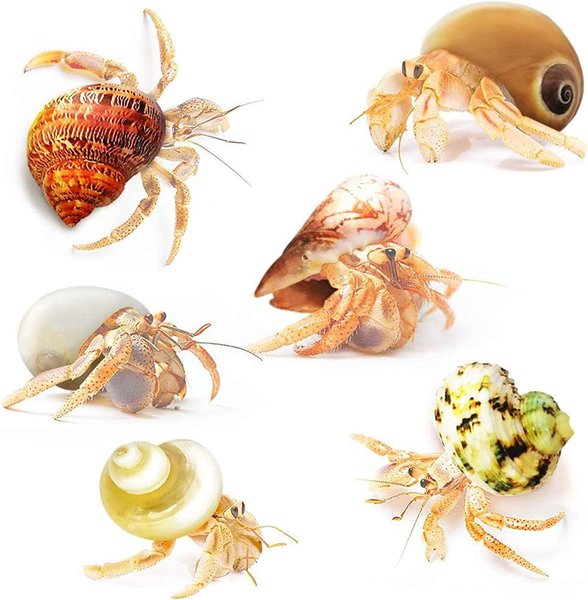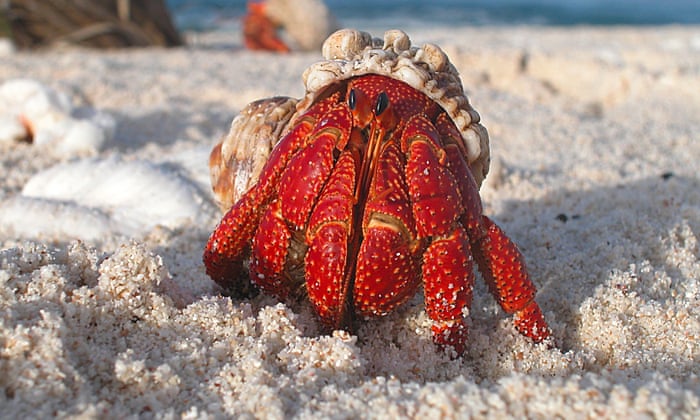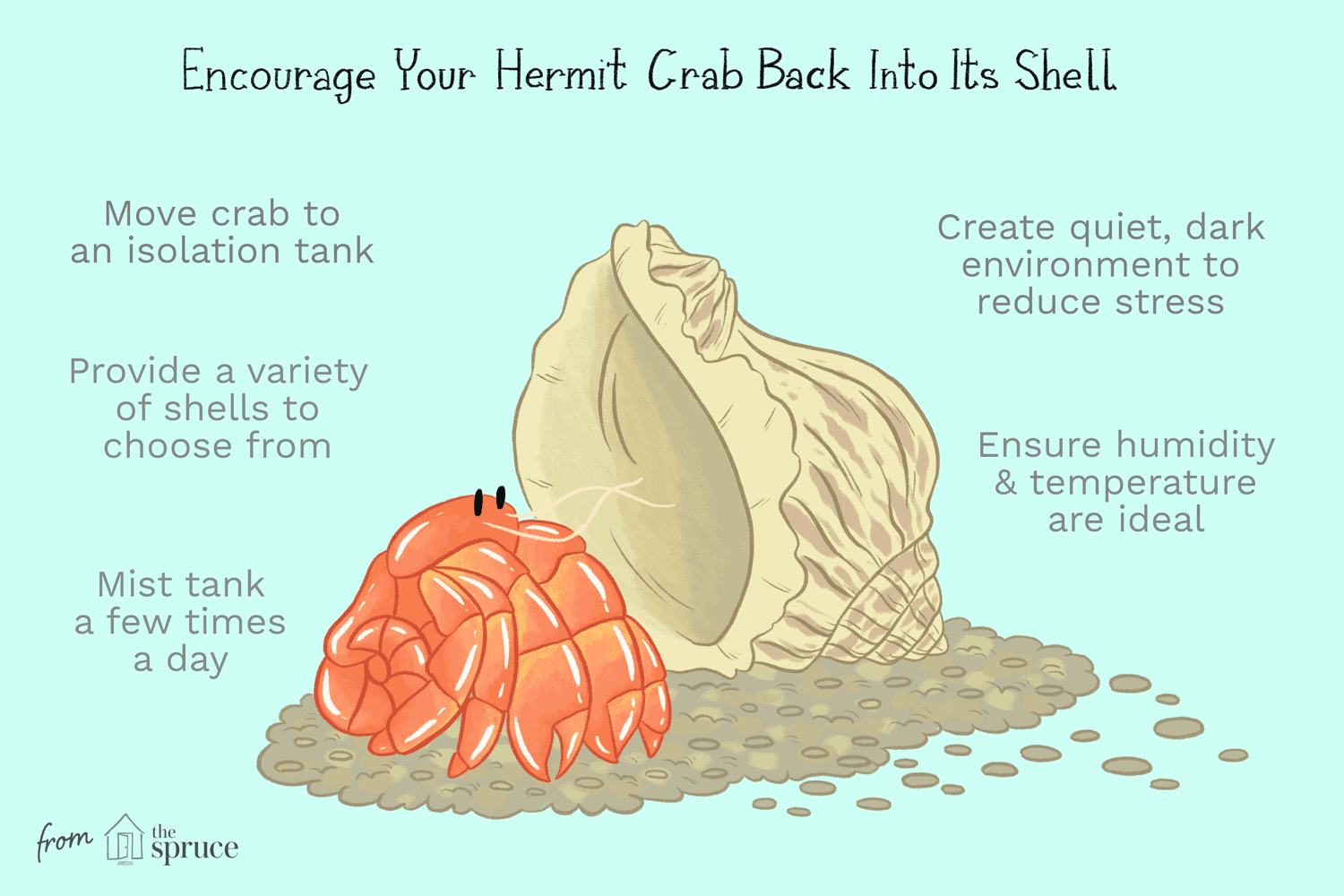Shell evacuation in hermit crabs is a normal behavior and not necessarily a cause for concern. It is important to understand why hermit crabs leave their shells and what to do if this happens.
Understanding Shell Evacuation In Hermit Crabs
Understanding shell evacuation in hermit crabs is crucial for their well-being. When hermit crabs outgrow their shells or feel threatened, they will leave their current shell to find a new one. It is important to provide adequate shell options and a stress-free environment for them to ensure a smooth transition.
When it comes to hermit crabs, their shells play a crucial role in their survival and well-being. Shell evacuation, also known as shell changing or shell switching, is a fascinating behavior exhibited by hermit crabs. In this section, we will shed light on what shell evacuation is, the reasons behind it, and the role shells play in the lives of these unique creatures.
What Is Shell Evacuation?
Shell evacuation refers to the process by which hermit crabs abandon their current shell and look for a new one to inhabit. Unlike other organisms, hermit crabs do not have a hard exoskeleton to protect their soft abdomen. Instead, they rely on discarded shells of other animals to provide them with protection and shelter. As hermit crabs grow in size, they need to find larger shells to accommodate their expanding bodies. This prompts them to go through the process of shell evacuation.
Reasons For Shell Evacuation
The primary reason for shell evacuation in hermit crabs is the need for a larger, more suitable living space. As these crustaceans grow, their current shell becomes constricting and uncomfortable. By vacating their old shell and finding a new one, hermit crabs ensure that they have sufficient space to continue their growth and development. This behavior is essential for their survival and overall well-being.
Another reason for shell evacuation is to escape from predators. Like all animals, hermit crabs face threats from various predators in their natural habitats. By changing shells, hermit crabs can confuse predators and make it harder for them to catch or identify them. This provides them with a higher level of protection against potential dangers.
The Role Of Shells In Hermit Crabs
Shells play a vital role in the lives of hermit crabs. They serve as a protective covering for their soft abdomens, shielding them from potential harm and providing them with a sense of security. Shells also act as a home for these crabs, offering them a safe space to retreat when they feel threatened or need rest.
Moreover, shells contribute to the overall well-being and health of hermit crabs. They help regulate the crabs’ internal moisture levels, prevent dehydration, and protect them from extreme temperatures. Additionally, shells serve as a means of communication among hermit crabs. Different shell shapes and sizes provide visual cues that indicate the dominance or size of a particular crab.
Overall, understanding shell evacuation in hermit crabs helps us appreciate the complexity and significance of this behavior in their lives. By providing them with suitable shells, we contribute to their overall welfare and ensure their continued growth and survival.

Credit: www.chewy.com
Responding To Shell Evacuation
When it comes to responding to shell evacuation in hermit crabs, it is important to allow the crab to come out on its own. Leaving the crab be and not interfering is the best course of action to ensure its well-being.
What To Do When Your Hermit Crab Leaves Its Shell
When you notice that your hermit crab has left its shell, it can be quite alarming. However, it’s important to stay calm and take the necessary steps to ensure your crab’s well-being. Here’s what you should do when your hermit crab leaves its shell:- Firstly, resist the urge to handle or touch the crab immediately. It may already be stressed, and any sudden movements can further agitate it. Give your crab some space and observe its behavior closely.
- Check the general conditions of your crab’s habitat. Ensure that the temperature and humidity levels are within the appropriate range for your crab’s species. Any sudden changes in these conditions can potentially trigger a shell evacuation.
- Inspect the shell your crab left behind. Look for any signs of damage or foul odor, as these could indicate an issue with the shell itself. If the shell is damaged, it’s crucial to find a suitable replacement for your crab.
- Offer a variety of shell options to your crab. You can provide different sizes, shapes, and textures to see which one it prefers. This will give your crab the opportunity to select a new home that best suits its needs.
- Place the chosen new shell near your crab’s hiding spot, but avoid forcefully trying to put it on your crab. Allow your crab to explore and make its own decision.
- Monitor your crab closely after it has chosen a new shell. Make sure it successfully transitions into its new home and that it appears comfortable and active.
Replacing Shells: A Step-by-step Guide
Replacing hermit crab shells is a delicate process that requires patience and care. Here’s a step-by-step guide on how to replace your hermit crab’s shell:- Prepare a clean container filled with dechlorinated saltwater. This will serve as the temporary habitat for your crab during the shell replacement process.
- Gently remove your crab from its current shell, if it hasn’t already left it voluntarily. You can use a soft paintbrush or your hand to coax it out gently.
- Carefully inspect the crab’s body and legs for any signs of injury. If you notice any wounds or abnormal behavior, consult a veterinarian specializing in exotic pets.
- Offer a selection of cleaned and properly sized shells to your crab. Ensure that the opening of the shell is slightly larger than your crab’s body, allowing room for growth.
- Allow your crab to explore and select a new shell. It may take some time for your crab to make a decision, so be patient and avoid rushing the process.
- Gently place your crab into the chosen new shell. Ensure that the crab’s abdomen is fully tucked inside the shell, and that it can freely extend and retract its limbs.
- Transfer your crab back to its regular habitat, making sure that the conditions are suitable and that the crab has access to food, water, and hiding places.
- Monitor your crab’s behavior closely after the shell replacement. Observe for signs of stress or discomfort, and provide extra care during this adjustment period.
Leaving The Crab Alone: The Importance Of Space And Privacy
It is crucial to give your hermit crab space and privacy when it goes through a shell evacuation. Here’s why leaving the crab alone is essential:- Hermit crabs are naturally solitary creatures, and they prefer being left undisturbed in their hiding spots.
- Handling or touching a crab that has just left its shell can cause stress and potentially harm the crab.
- By providing a calm and quiet environment, the crab can feel safe and secure as it selects a new shell and adjusts to it.
- Interventions, such as trying to force the crab into a new shell, can lead to additional stress and potentially harm the crab’s delicate body.
- Monitoring from a distance allows you to observe any signs of distress or abnormal behavior, which can be indicators of underlying health issues.
Common Mistakes And Myths About Shell Evacuation
Discovering the truths about shell evacuation in hermit crabs can help avoid common mistakes. Contrary to myths, it’s best to allow a stuck crab to come out on its own, as leaving it be allows for natural movement.
Myth: Shell Evacuation Always Indicates A Problem
One common myth regarding shell evacuation in hermit crabs is the belief that it always indicates a problem. This is not entirely true. While it is true that hermit crabs generally prefer to remain inside their shells for protection, there are times when they voluntarily leave their shells for various reasons. It’s important not to panic and assume that shell evacuation automatically signifies a problem.
Mistake: Trying To Force The Crab Back Into Its Shell
A common mistake many hermit crab owners make when they notice their crab outside of its shell is trying to force it back inside. This is a big no-no. Forcing the crab back into its shell can cause stress and injury to the crab, potentially leading to more serious problems. Instead, it’s important to understand why the crab left its shell and take appropriate steps to ensure its well-being.
Debunking Common Misconceptions About Shell Evacuation
There are several misconceptions surrounding shell evacuation in hermit crabs. Let’s debunk a few of them:
- Myth: Hermit crabs only leave their shells if they are being attacked by another crab. While aggression between hermit crabs is not uncommon, there are other reasons why a crab may evacuate its shell. It could be due to a molt, the need for a larger or more suitable shell, or simply out of curiosity.
- Myth: Shell evacuation always indicates a health problem. While shell evacuation can be a sign of certain health issues, it is not always the case. Sometimes, a hermit crab may simply outgrow its current shell or require a different shell to meet its changing needs. It’s important to assess the overall health and behavior of the crab before jumping to conclusions.
- Myth: You should immediately intervene and provide a new shell when a crab evacuates its current one. While it’s important to have extra shells available for your hermit crabs, it’s not always necessary to immediately introduce a new shell when a crab evacuates its current one. Give the crab some time to explore and find a suitable replacement shell naturally. Intervention should only be necessary if the crab is unable to find a new shell on its own or if it shows signs of distress.
By debunking these common misconceptions, we can better understand the behavior of hermit crabs and provide them with the appropriate care they need.
:strip_icc()/hermit-crab-without-shell-1068069832-5c06d36cc9e77c0001ee3d5c.jpg)
Credit: www.thesprucepets.com

Credit: www.theguardian.com
Frequently Asked Questions On Shell Evacuation In Hermit Crabs
What To Do If Your Hermit Crab Is Stuck In Its Shell?
If your hermit crab is stuck in its shell, leave it be and allow it to come out on its own. Staying in the shell is normal during molting. Avoid disturbing the crab and let it handle the situation naturally.
Why Did My Hermit Crab Leave His Shell And Died?
Hermit crabs sometimes leave their shells when they are dying. It takes a lot of energy to carry a shell, and when a crab is already weak, it can be too much for them. This doesn’t mean they were attacked by another crab.
How Do You Get Hermit Crabs Out Of Their Shells?
To get hermit crabs out of their shells, it’s best to let them come out on their own. If a crab is stuck, do not force it out as it may harm the crab. Occasionally, hermit crabs leave their shells when they are dying.
Do Hermit Crabs Stay In Their Shells When They Molt?
During molting, hermit crabs will shed their outer shells and grow a new one. They may leave their old shell behind, which may appear similar to a dead crab, but it is actually hollow. This is a natural process and not a cause for concern.
Conclusion
Shell evacuation in hermit crabs is a normal and essential process as they grow. It is not necessarily a cause for concern. When your hermit crab leaves its shell, it is important to provide a suitable replacement and create a stress-free environment for them to continue their molt.
By understanding the natural behavior of hermit crabs and providing them with appropriate care, you can ensure their well-being and promote a healthy molting process. Remember to observe and evaluate your husbandry practices regularly to meet the changing needs of your hermit crab.

